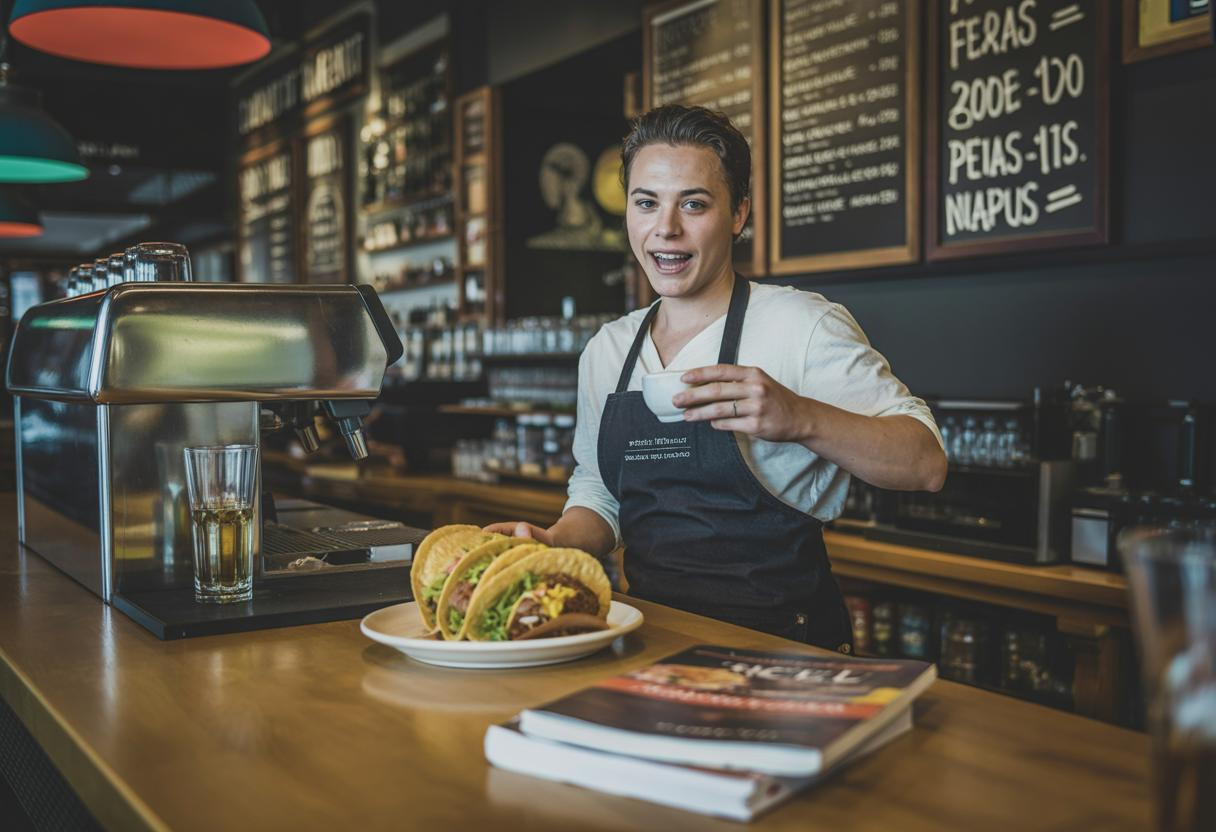A small Texas town has cracked the code on saving local journalism, and the secret weapon isn’t digital subscriptions or wealthy donors—it’s perfectly brewed coffee and breakfast tacos. The Sentinel in Marfa combines a thriving café with a 99-year-old newspaper, creating a revolutionary model that’s keeping local news alive while other papers across America continue shuttering their doors.
How a café became the unlikely savior of journalism
When Maisie Crow and Max Kabat bought The Big Bend Sentinel in 2019, they faced the same brutal reality plaguing newspapers nationwide: over 3,200 print publications have closed since 2005. But instead of accepting defeat, this New York couple did something unprecedented—they turned their newsroom into a community café.
The results speak volumes. The café now generates more revenue than the newspaper itself, allowing them to grow from 4 employees to nearly 20 staff members. This makes The Sentinel one of Marfa’s largest employers in a town of just 2,000 residents.
What makes this model particularly fascinating is how it addresses the fundamental challenge facing rural communities nationwide, similar to infrastructure challenges facing small rural communities where traditional systems are failing and innovative solutions become essential for survival.
The psychology behind mixing news with your morning coffee
Creating an irreplaceable community anchor
The genius lies in solving multiple problems simultaneously. Physical newspapers struggle to compete with digital platforms, but a café offers something no website can replicate—a genuine community gathering space. Locals grab coffee while discussing city council meetings, and tourists discover local issues they’d never encounter through social media feeds.
Presidio County Attorney Blair Park emphasizes that The Sentinel remains the primary source covering local government and community issues that larger outlets completely ignore. This creates a loyalty loop: better journalism builds stronger community connections, which drives more café traffic.
Revenue diversification that actually works
Traditional newspapers rely heavily on advertising and subscriptions, but The Sentinel’s model demonstrates how alternative revenue strategies that challenge traditional models can create sustainable business practices. The café generates income through breakfast, lunch, cocktails, events, and retail—creating multiple revenue streams that buffer against economic downturns.
The approach addresses a critical gap that many industries face: when traditional models fail to serve market needs, successful businesses find creative ways to bridge those gaps, much like the challenges of finding proper fit in consumer markets where innovative companies succeed by addressing overlooked customer needs.
Lessons other communities can steal immediately
The Sentinel’s success reveals three transferable strategies that struggling newspapers could implement. First, identify your community’s missing gathering spaces—many small towns lack neutral venues where diverse groups naturally intersect.
Second, leverage local assets strategically. Marfa’s tourism and art scene provide built-in customers, but every community has unique strengths. The key is matching your revenue diversification to local traffic patterns and cultural preferences.
Third, maintain clear operational boundaries. The Sentinel separates its business entities legally—Sentinel, LLC for the café and West Texan Media Group for the newspaper—protecting editorial independence while maximizing business flexibility.
The surprising sustainability factor most experts miss
Critics argue this model depends too heavily on tourism, but the real sustainability comes from becoming genuinely indispensable to daily community life. When your newspaper office doubles as the place where locals grab morning coffee, attend evening events, and celebrate major milestones, you’ve created something much stronger than a subscription base.
The Sentinel hosts weddings, proms, and cultural events, embedding itself into the community’s social fabric. This creates a powerful network effect: better community integration leads to stronger journalism, which drives more local engagement and café traffic.
What this means for the future of local news
The Sentinel proves that saving local journalism isn’t about competing with digital giants—it’s about becoming irreplaceable in ways technology can’t replicate. By combining essential services with community gathering spaces, small-town newspapers can build sustainable business models that serve both financial and democratic needs.
The lesson isn’t just about cafés and newspapers. It’s about recognizing that survival in the modern economy often requires creative integration of services that seem unrelated but actually strengthen each other in powerful, unexpected ways.
